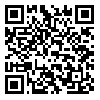Volume 12, Issue 3 (Autumn 2010)
Advances in Cognitive Sciences 2010, 12(3): 59-72 |
Back to browse issues page
1- Psychology Dept., Zanjan University, Zanjan, Iran.
2- Psychology Dept., Shiraz University, Shiraz, Iran.
3- BA in Psychology
2- Psychology Dept., Shiraz University, Shiraz, Iran.
3- BA in Psychology
Abstract: (2537 Views)
Objective: The aim of the present study was to investigate the effect of the kind of source problem processing on construction and transfer of the solution schema to the target problem in an analogical problem – solving situation.
Method: For this purpose, using an experimental “post-test multiple group” a sample of 90 male undergraduate students of Zanjan University were first divided into three groups: verbal, theatrical, and painting. The participants all read the story of “General and Dictator” and recreated the story through their specific methods. Subsequently the members of the three groups attempted to solve the problem of the ray and the tumor, whose necessary schema was embedded in the primary story.
Results: Results show that prior to indicating a structural similarity between the story of the general and the ray problem, the participants who had acted out the story, were more successful in solving the problem in comparison with participants who had recreated the story verbally or through drawing. This is despite the lack of difference between the three groups with regard to the quality of recalling the story of the general, and the fact that the quantitative difference was even worse in the acting group.
Conclusion: Since the successful solving of the target problem in this study, required a kinesthetic schema, and as the possibility of forming these schemas is higher during executing active behavior (acting) in comparison with other situations, the participants in the acting group performed better than their counterparts in other groups. In general, results indicate that for a successful transfer of principles from resource to target, the richness of the formed schemas is not sufficient. To solve the target problem, the formed schema should be of the same source with the required schema.
Method: For this purpose, using an experimental “post-test multiple group” a sample of 90 male undergraduate students of Zanjan University were first divided into three groups: verbal, theatrical, and painting. The participants all read the story of “General and Dictator” and recreated the story through their specific methods. Subsequently the members of the three groups attempted to solve the problem of the ray and the tumor, whose necessary schema was embedded in the primary story.
Results: Results show that prior to indicating a structural similarity between the story of the general and the ray problem, the participants who had acted out the story, were more successful in solving the problem in comparison with participants who had recreated the story verbally or through drawing. This is despite the lack of difference between the three groups with regard to the quality of recalling the story of the general, and the fact that the quantitative difference was even worse in the acting group.
Conclusion: Since the successful solving of the target problem in this study, required a kinesthetic schema, and as the possibility of forming these schemas is higher during executing active behavior (acting) in comparison with other situations, the participants in the acting group performed better than their counterparts in other groups. In general, results indicate that for a successful transfer of principles from resource to target, the richness of the formed schemas is not sufficient. To solve the target problem, the formed schema should be of the same source with the required schema.
Type of Study: Research |
Subject:
Special
Received: 2010/05/22 | Accepted: 2010/07/23 | Published: 2010/09/23
Received: 2010/05/22 | Accepted: 2010/07/23 | Published: 2010/09/23
| Rights and permissions | |
 |
This work is licensed under a Creative Commons Attribution-NonCommercial 4.0 International License. |


